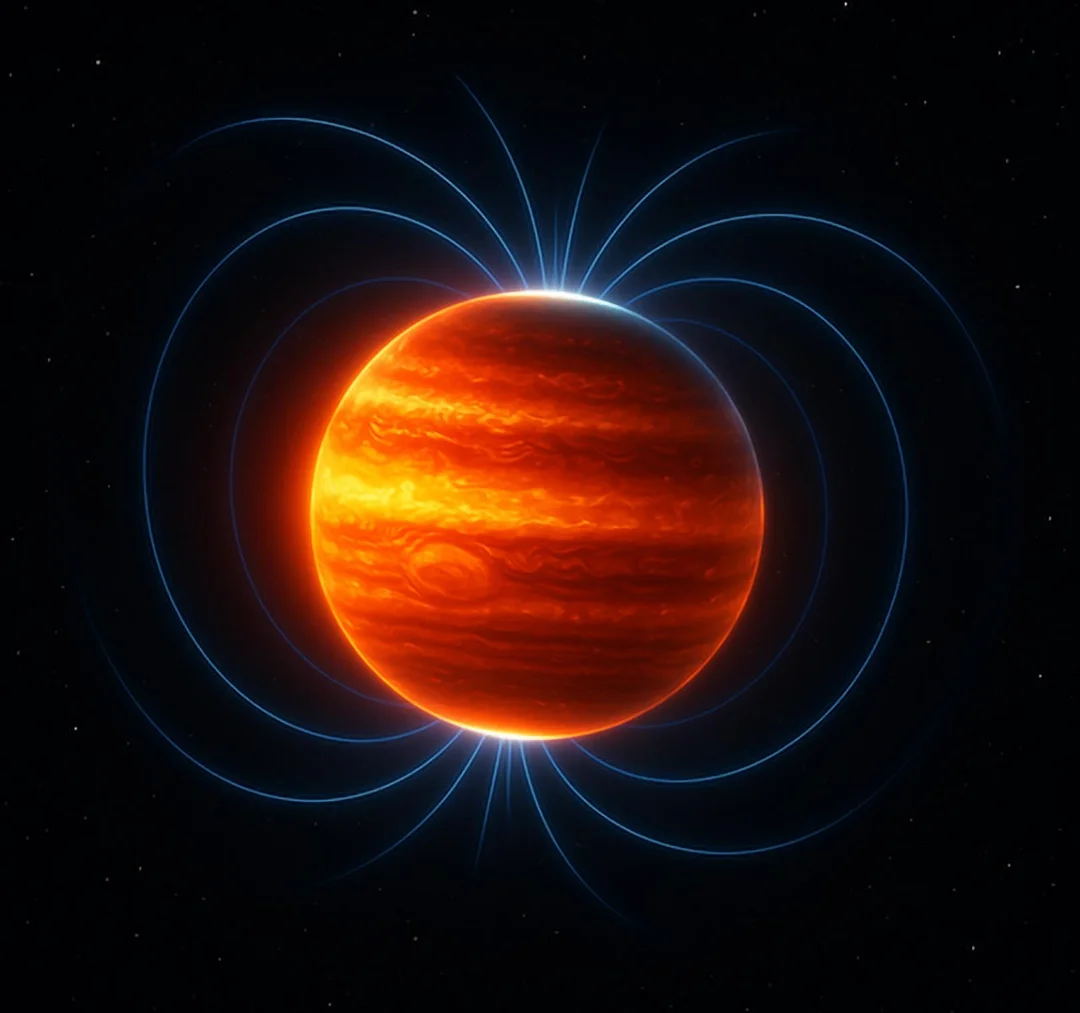
Jupiter’s Turbulent Youth: Twice the Size, 50x the Magnetic Field – A Solar System Origin Story
Jupiter, the solar system's giant, wasn't always the planet we recognize today. New research reveals its early life was far more dramatic: it was once twice its current size and possessed a magnetic field 50 times stronger. This discovery, gleaned from the orbits of two tiny inner moons, provides a crucial snapshot of Jupiter's turbulent youth and its pivotal role in shaping the architecture of our solar system.

Often hailed as the "architect" of the planets, Jupiter's immense gravity has long been understood to have influenced the orbits of its neighbors and sculpted the protoplanetary disk. Now, a study published in Nature Astronomy, spearheaded by Konstantin Batygin of Caltech and Fred C. Adams of the University of Michigan, delves deeper into these mysteries.
The researchers focused on a pivotal moment around 3.8 million years after the first solid particles appeared in the solar system, when the protoplanetary nebula was fading. At this time, Jupiter, already a giant, was nearly twice its present size, boasting a magnetic field of unimaginable strength.
"Our ultimate goal is to understand where we come from, and pinning down the early phases of planet formation is essential to solving the puzzle," says Batygin. "This brings us closer to understanding how not only Jupiter but the entire solar system took shape."
The key to unlocking Jupiter's past lay in two of its smallest and closest moons: Amalthea and Thebe. Unlike perfectly flat paths, these moons exhibit slight orbital tilts. By studying these subtle wobbles, Batygin and Adams worked backward, estimating Jupiter's original size and magnetic field strength.
Their findings revealed that early Jupiter had a volume exceeding 2,000 Earths, enveloped by a magnetic field capable of profoundly shaping its surroundings.
According to Adams, "It's astonishing that even after 4.5 billion years, enough clues remain to let us reconstruct Jupiter's physical state at the dawn of its existence."
This research sidesteps many traditional uncertainties of planetary formation models by focusing on the orbital dynamics of Jupiter's moons and the conservation of the planet's angular momentum – directly measurable quantities. This offers a clear view of Jupiter when the surrounding solar nebula evaporated, locking in the primordial architecture of the solar system.
These insights support existing theories that giant planets like Jupiter formed via core accretion. The new study refines these models by providing more precise measurements of Jupiter's size, spin rate, and magnetic conditions during its early stages.
"What we've established here is a valuable benchmark," Batygin emphasizes. "A point from which we can more confidently reconstruct the evolution of our solar system."
This groundbreaking research has provided a fascinating insight into the early life of a giant planet and it's direct impact on how the solar system looked like today.
What other secrets might Jupiter's moons hold about our solar system's past? Share your thoughts in the comments below!